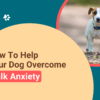
Master Dog Grooming at Home: A Simple Guide – Unleash Your Pet Care Potential with Our Essential Home Grooming Handbook
In the hustle and bustle of life, our dogs often serve as faithful companions, providing unconditional love and companionship. Their cheerful barks, wagging tails, and ecstatic greetings at the door do much to lift our spirits. But like us, they too have needs that require attention, with grooming sitting at the top of the list.
Grooming is a crucial aspect of dog care. It’s not just about keeping your pooch looking spick and span but also ensuring their overall well-being. Grooming involves tasks like brushing, bathing, and nail trimming, all of which significantly contribute to a healthy, happy dog.
Choosing to groom your dog at home can have many benefits. Not only does it serve as a bonding opportunity and a significant saving on professional grooming costs, but it also allows for early detection of potential health issues.
In this guide, we’ll navigate you through understanding your dog’s grooming needs, the essential tools you’ll require, and a step-by-step process of doing it all at home. We’ll also provide breed-specific tips, highlight common mistakes to avoid, and how to handle grooming challenges. With a little practice, you’ll soon be a pro, keeping your canine companion both healthy and handsome.
Understanding Your Dog’s Grooming Needs
Understanding your dog’s grooming needs is a key first step in maintaining their health and well-being. Remember, just as we humans have diverse hair types and skincare routines, dogs too, based on their breed and age, have unique grooming requirements.
When considering breeds, it’s crucial to recognize that no two are identical in their grooming needs. Take the Poodle, for instance, their distinct, curly fur requires more frequent grooming and specialized care, compared to, say, a Beagle, with its short, sleek coat. The Labrador Retriever, another popular breed, boasts a water-resistant, double coat that sheds seasonally and needs regular brushing to prevent matting and skin conditions.
Speaking of dog coats, they come in a wide variety, each with its own set of care requirements. Short-coated breeds like Boxers or Dalmatians have minimal grooming needs, requiring just an occasional brushing to remove loose hair. Medium-length coats, often seen on breeds like Golden Retrievers, demand regular brushing to prevent tangling and matting.
Long-haired breeds such as Yorkshire Terriers or Shih Tzus need even more upkeep, including daily brushing and frequent hair trims. Then, there are dogs with unique coat types, like the corded coats of Puli, which require specialized care to maintain their distinctive appearance.
Grooming needs also fluctuate with your dog’s age. Puppies, with their soft, fluffy coats, need gentle handling. Regular grooming sessions from a young age not only keep them clean but also help them grow accustomed to the process, paving the way for easier grooming in their adult years.
As dogs mature, their coats change, and so do their grooming needs. Regular brushing, bathing, and ear cleaning become vital. When your pet reaches its senior years, health issues like arthritis may make grooming sessions difficult. At this stage, comfort becomes paramount, and grooming routines may need adjustments to accommodate their changing needs.
In the world of dog grooming, understanding these specific needs is not just an added advantage; it’s a necessity. It helps foster a more profound, more attuned connection with your pet, enabling you to cater to their needs more effectively and ensuring their comfort and health. It’s a perfect blend of science and empathy, and mastering it will put you on the path to providing the best care for your canine companion.
Essential Dog Grooming Tools
Now that we’ve talked about understanding your dog’s unique grooming needs, it’s time to turn our attention to the tools of the trade. After all, in the world of at-home dog grooming, having the right tools at your disposal can significantly enhance the experience for both you and your pet.
Let’s start with brushes. There’s a whole range of brushes to choose from, including slicker brushes, rake brushes, and bristle brushes. Your dog’s coat type will largely dictate which brush is right for them. Slicker brushes, for example, are great for removing tangles in long-haired dogs, while bristle brushes are excellent for short-haired breeds.
Next up, we have clippers and scissors. Clippers are mainly used to trim your dog’s hair. When selecting a clipper, consider factors like motor speed, noise level, and blade quality. Some dogs may be sensitive to the noise or vibration of certain clippers, so it’s essential to choose one that suits your pet’s temperament. Scissors are generally used for precision trimming around areas like the face and paws, and you’d want a pair that’s sharp yet safe.
Then we have nail trimmers. There are a few types available: guillotine style, scissor style, and grinder tools. Each has its pros and cons, but the most important factor is which one you and your pet are most comfortable with.
Shampoo is another critical component of dog grooming. Look for one that’s designed specifically for dogs. Human shampoo has a different pH level and can irritate your pet’s skin. You might also consider shampoos designed for specific needs, like treating fleas or soothing sensitive skin.
Now, when choosing these tools, it’s crucial to prioritize quality. While it might be tempting to save a few bucks with cheaper options, quality tools not only last longer, they also provide a better grooming experience. Look for brands with solid customer reviews and proven track records.
Size is also a key consideration. The size of the brush or clippers you choose should be appropriate for your pet’s size and the density of their coat.
Equipping yourself with the right tools is integral to your at-home grooming journey. And remember, the best tool is not necessarily the most expensive one; it’s the one that works best for you and your pet. So, choose wisely!
Step-by-Step Guide To Dog Grooming at Home
As we delve into the practical side of at-home dog grooming, remember that the goal is not just to have your pet looking their best, but also to make the experience enjoyable for both of you.
Preparation
The first step is preparation. Start by introducing your dog to the grooming tools. Let them sniff and explore the brushes, clippers, and other tools you’ll be using. This helps to reduce anxiety and build positive associations. Additionally, create a quiet, calm environment for grooming. A non-slip mat is helpful to ensure your pet feels secure.
Brushing
Next is brushing. How you brush and how often will depend on your dog’s coat. Short-haired dogs may only need weekly brushing, while long-haired breeds often require daily attention. Always brush in the direction of hair growth, and be gentle to avoid hurting your dog or damaging their coat.
Bathing
The frequency of baths will depend on your dog’s breed, coat type, and lifestyle. Most dogs need a bath every 4-6 weeks, but a muddy playdate might require an impromptu bath. When bathing, wet your dog thoroughly, apply dog-specific shampoo, and rinse completely. Remember to avoid the eyes and ears.
Trimming
Trimming can be intimidating, especially around sensitive areas. Start by combing the hair to remove any knots. Then, using the right clippers, trim in the direction of the hair growth. For sensitive areas, like the face or paws, use safety scissors and work slowly and carefully.
Nail Trimming
Finally, we come to nail trimming. It’s important to note that dogs’ nails have a blood vessel known as the quick, and cutting into this can cause pain and bleeding. Use a suitable nail trimmer, and make small cuts to avoid hitting the quick. If your dog has clear nails, you can see the quick as a darker area within the nail. For dogs with dark nails, you may need to make tiny trims and check the nail cross-section for a dark spot, which indicates you are close to the quick.
By following these steps, and remembering that patience and consistency are key, you’ll soon find yourself well-versed in the art of dog grooming. In no time, you’ll have a well-groomed pet, all achieved in the comfort of your home.
Dog Grooming Tips For Different Breeds
Now that we’ve covered the general steps of dog grooming, it’s worth noting that certain breeds have specific needs. Let’s take a brief look at some popular breeds: Bulldogs, Poodles, and Golden Retrievers.
Bulldogs, with their characteristic wrinkles, need regular cleaning in these skin folds to prevent bacterial and yeast infections. A simple wipe with a damp cloth followed by a dry one usually does the trick.
Poodles are known for their curly, dense coat that requires regular grooming to prevent matting. Many Poodle owners opt for professional grooming due to the complexity of the coat, but with the right tools and a bit of patience, home grooming is entirely achievable. Remember to invest in a good-quality slicker brush and consider learning a few basic Poodle-friendly clips.
Golden Retrievers, with their beautiful, water-repellent double coats, require regular brushing to manage shedding and prevent mats. Despite the temptation, avoid shaving your Golden Retriever as their double coat serves to regulate their body temperature, keeping them warm in winter and cool in summer.
Remember, each breed is unique, and these tips just scratch the surface. Always take time to understand your pet’s breed-specific needs to ensure they’re getting the optimal care. It’s all part of the rewarding journey of home grooming.
Common Dog Grooming Mistakes To Avoid
Venturing into at-home dog grooming can be a rewarding experience, but it’s not without potential pitfalls. Here are a few common mistakes and how to sidestep them:
Skipping Regular Brushing: Many pet parents underestimate the importance of regular brushing. It removes loose hair, prevents matting, and helps distribute natural oils across the coat, contributing to healthier skin and shinier fur. Establish a routine, and stick to it.
Using Human Products: While it might seem convenient to use human shampoo or clippers, they’re not designed for dogs and can cause skin irritation or ineffective grooming. Always use products specifically designed for dogs.
Rushing the Process: Grooming, especially for a newbie, can be a time-consuming task. Rushing through it can result in missed spots or accidental nicks with the trimmer. Set aside enough time to handle the grooming process calmly and patiently.
Ignoring the Ears and Teeth: These areas often get overlooked in home grooming. Regular ear checks and teeth cleaning are vital components of a complete grooming routine.
Neglecting Comfort: Last but not least, always prioritize your dog’s comfort. An uncomfortable pet can make the grooming process stressful for both of you.
Avoiding these common missteps can help make your home grooming endeavor more effective and enjoyable, enhancing the bond between you and your furry friend.
Final Thoughts
Wrapping up, mastering at-home dog grooming brings multiple benefits. Beyond the financial savings and convenience, it’s an opportunity to strengthen the bond with your pet, fostering trust and companionship. It also allows you to monitor their health closely, enabling you to spot any abnormalities like skin issues or ticks early on.
However, remember that grooming is a journey, not a destination. Starting slow is absolutely okay, and patience is your best companion. If you or your dog feel overwhelmed, take a break. With time, practice, and patience, you’ll notice the process becoming smoother and more efficient.
The goal isn’t just to have a well-groomed dog, but also to ensure the grooming process is a positive experience for both of you. By taking one step at a time, before you know it, you’ll be well-versed in the art of at-home dog grooming. So, here’s to you and your pet’s grooming success!






